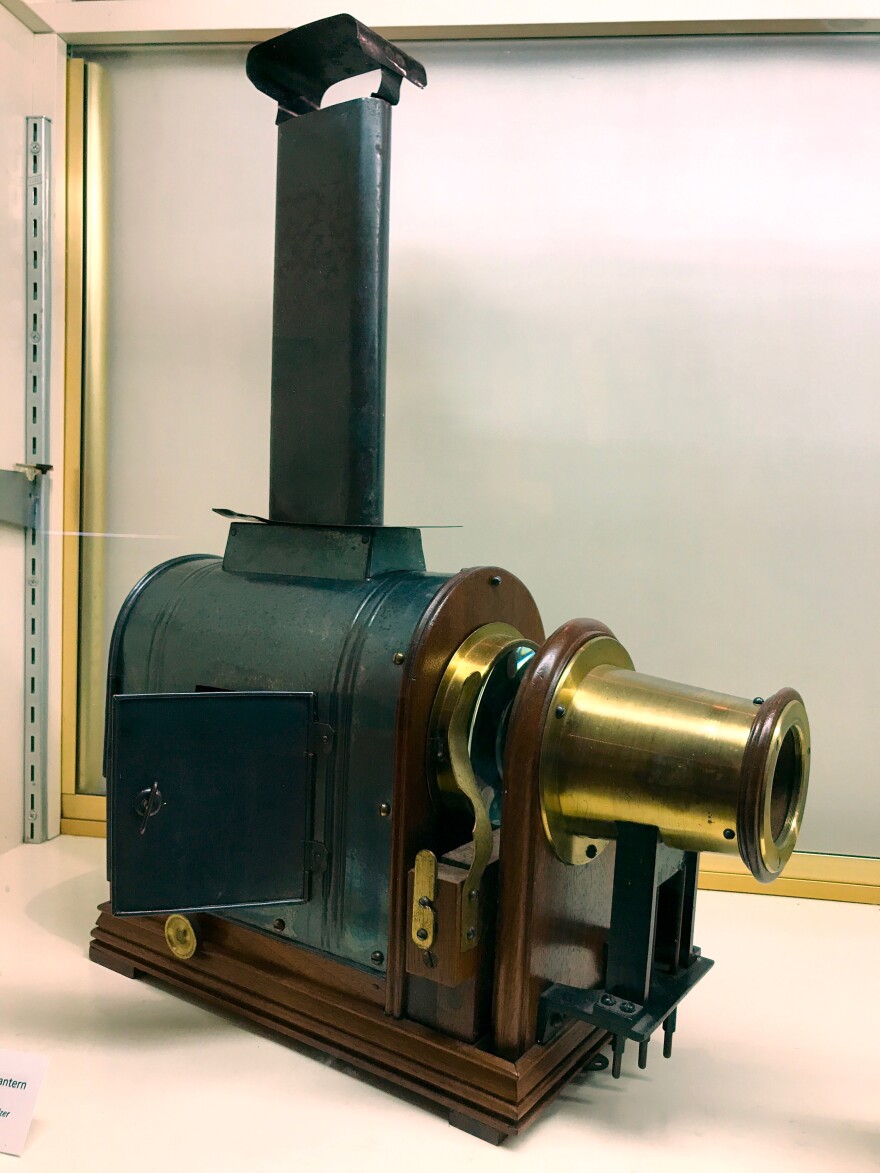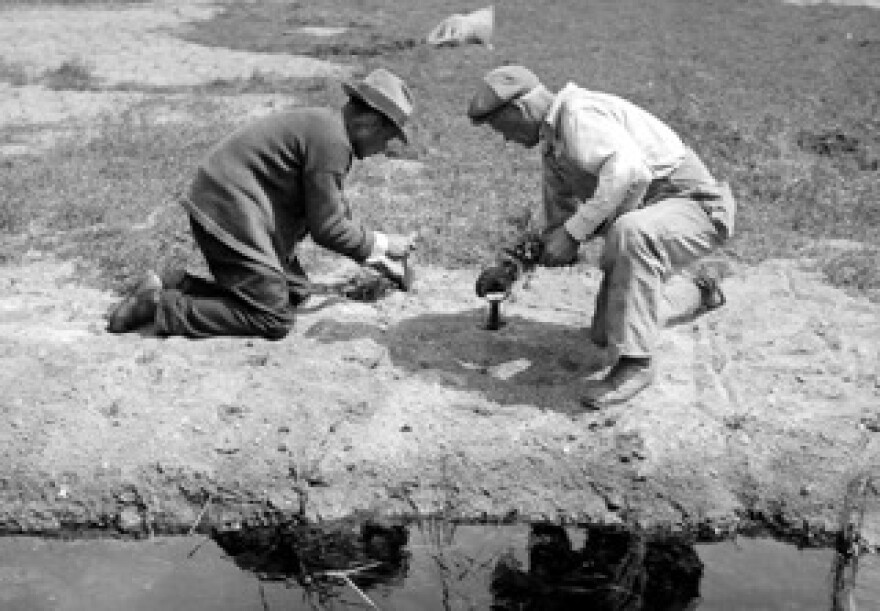Cape Cod has been well documented through the years by both amateur and professional photographers. Among the most fascinating images of the Cape are those taken when the area was beginning to emerge as a tourist destination for average Americans – when more and more people owned cars and could afford to take vacations. The Brooks Academy Museum in Harwich is currently displaying a collection of photos taken during the 1930s by Harwich photographers Lawrence Robbins and Alan Cahoon.
“They went around the Cape – all over, from Sandwich to Provincetown – and took photographs of anything they thought was interesting or noteworthy,” said Museum Director Janet Cassidy. The photos were originally recorded onto glass plates, and shown on a device called a “magic lantern” – a very early version of a slide projector.

“The photograph was taken onto the gel that was on the slide, and then the slide could be used to make a print, or it could be projected through a machine like this,” she said, motioning to one of the magic lanterns on display as part of the exhibit. It’s an odd-looking device with a long bronze lens housing, a small door on one side and something that resembles a miniature smokestack.
“This one was either lit by gas or kerosene or limelight. Limelight was calcium lime which was a type of rock. And they would light it and burn it at a very high temperature,” she said. “And they did that by using oxygen and hydrogen pressed into the flame to make a very bright light. And they used it in theaters for the footlights, and that’s where the expression of ‘being in the limelight’ comes from.”
It was a clunky, sometimes very dangerous, method for displaying photographs. Magic lanterns – understandably enough – became obsolete once modern-day slide projectors came into widespread use in the 1950s. But Cahoon and Robbins used magic lanterns to display their photos to the public. Their show was called: “Pictorial Cape Cod: A Tale Of Massachusetts’ Own Land Of Inviting Contrasts As Revealed By The Camera.”

The Brooks Academy Museum received a Harwich Community Preservation grant to digitize the old glass plates. Now, the images can be reproduced as prints or used for websites.
Cassidy says there’s no verification, but she thinks Robbins and Cahoon may have been hired to take the photos as part of an early marketing campaign for Cape Cod.
“This is the time that they would have been promoting tourism to the average person, and they went all over the Cape. It wasn’t just Harwich. They went from Provincetown to Sandwich – we have slides that show the Sandwich glass factory and so on. So we think that because they went everywhere, they may have been paid to do this,” Cassidy said.

Robbins and Cahoons’ photos of early Cape Cod are on display at the Brooks Academy Museum through October 7th.







